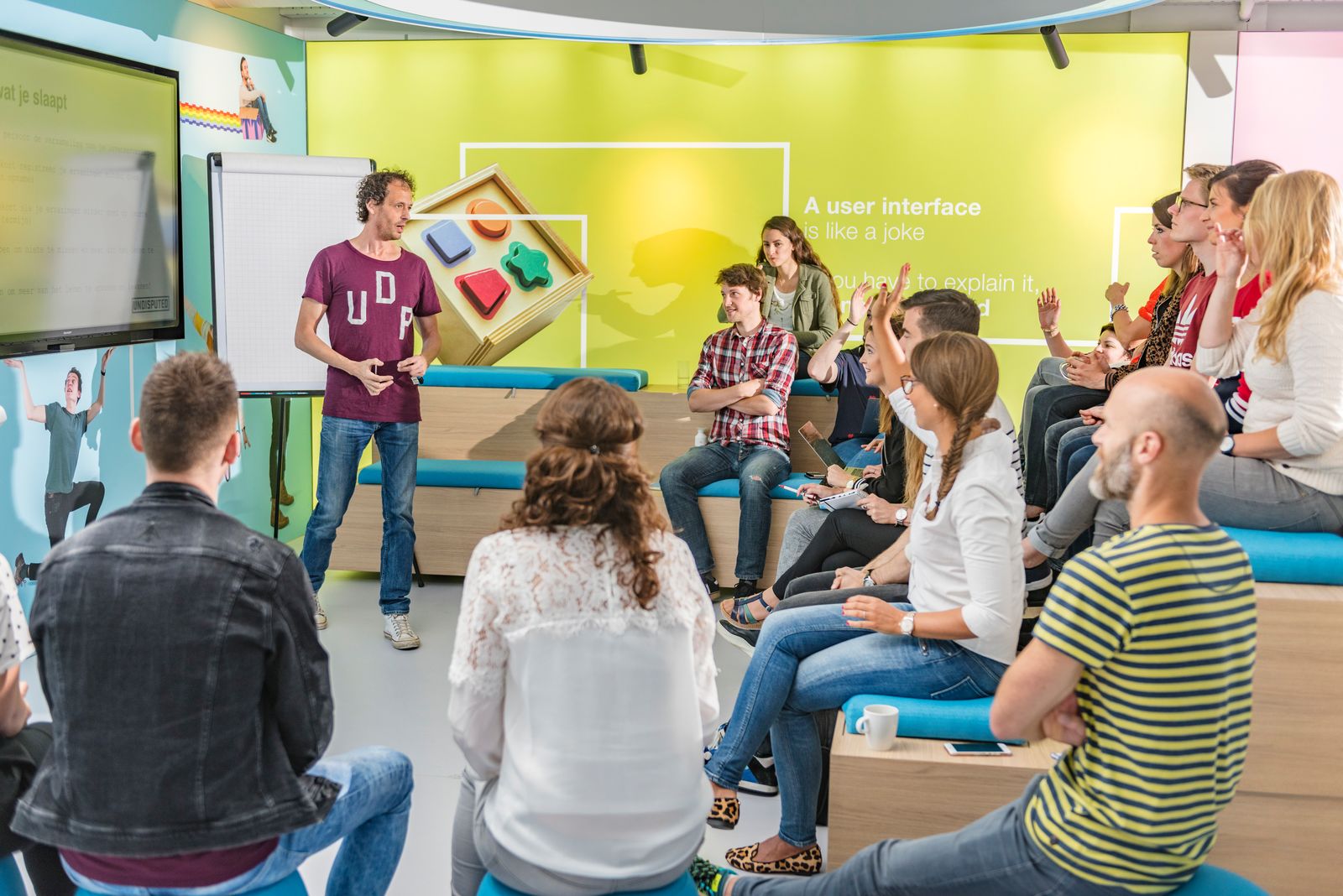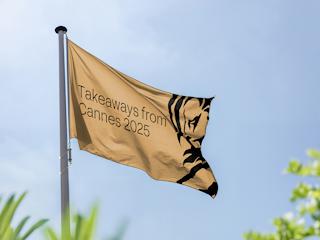There must be a clear vision and a long-term strategy behind how and why you use social media
Marketers know that you can spread your commercial message through social channels. But that doesn't mean that a campaign via Instagram or Facebook always works. To begin with, there must be a clear vision and a long-term strategy behind how and why you use social media. Do you want to create awareness about your brand or a certain theme, set your target group a buzz or increase your conversion? This calls for a quick disclaimer: it is even more important to dare to deviate from it again later. In the end it is all about ‘testing, testing, testing’ and using the lessons you have learned to optimise your campaign and achieve the result you strive for as marketer. So, it's all about data-driven marketing.
According to Nicole Lazaroms, these are the rules of the game:
#DO
Set Clear Goals
First, brainstorm about what you hope to achieve. Social channels should definitely be part of the overall marketing strategy and the connection to your target group.
Answer the question: why have you decided on a campaign? And think about what you want out of it. Brand recognition? Qualified leads? Greater customer satisfaction? Then, you can formulate the KPIs based on your objectives. Only if you have identified your objectives, you decide later on if you have set up an effective campaign.

Use the Customer Journey
Whatever model you use - from AIDA to Touch-Tell-Sell - the focus is always on the customer journey. After all, you always want the customer to experience the very best journey.
The first step is getting to know the customer and identifying their pain points. The second step is to really look at those points from a customer's point of view and plot the ideal customer journey with corresponding touchpoints. Depending on the type and scope of the campaign, there may be multiple touchpoints. First, we choose the channels that create maximum impact. You don’t organise the optimal customer journey only once: it is a continuous process of analysis and optimisation.
Describe your Target Group in Detail
You often hear about spot-on targeting: knowing your target group and adjusting your campaign accordingly. The better you know your target group, the more effective you can be. To properly map the target group, first we prepare the customer centricity matrix.
We look points as the characteristics, roles and motivations of a group. We do this together with our customer and ideally, with our customer’s customer too. Preferably supported by valid research into target group and data. You can also maximise use of extensive targeting options when advertising on social media. These options are truly endless when it comes to finding the perfect target group.
Interested and want to know more? Please contact us - hej@valtech.se
Sometimes it is also good to think beyond of your ‘own’ target group. Take this example from the L'Oréal, ‘This Is an Ad for Men’ campaign, where they uses humorous infographics (based on data) to target men (instead of women). To stand for female empowerment across the board. It’s focused on a pain point of the target audience (women) in the society, but targeted in a different way.
Be Sure the Foundation is Solid
‘Be sure everything is measurable and calibrated before starting a campaign. Think about placing the right pixels, such as re-targeting pixels. This way, you collect the target groups you can use again later in your campaign. But don’t forget conversion pixels, which ensure that the conversion is visible from your campaign. It is also important that you measure the entire flow in detail, such as the campaign page. This way can you carry out data-driven campaigns in the various phases of the customer journey.
Use Authentic Content
Users don’t always trust the information they find on social media. That is why we are looking for ways to increase confidence. By focusing on ways to authentically connect with your target audience and thus emphasise the personal and human aspects. Confirm this in a content strategy with a corresponding calendar, so that you know what you are posting on social media. Don’t carve this in stone, but view it as ‘hooks’. This lets you link the other touchpoints, including the newsletter, brochures and videos, in an integrated way.
And be sure your content fits the target group of your campaign: the more relevant, the more effective.
Opt for Agility
Rather than making extensive annual plans, we focus on quick interactions. We respond directly to customers and their changing wishes. This lets you base your choices on what works - and not what doesn’t - week by week. So, you don’t need to immediately set up one huge, expensive campaign, but rather spread the risk over smaller campaigns. Data is the fuel for the modern marketer.
Test, test, test!
If you generate insight, you can make improvements. You can do this with a Facebook campaign or on LinkedIn. Always use several posts and see what works. You can then focus more attention and budget on the ad that works best. It is also a good idea to regularly try out new tools and options. Be innovative, or at least be open to innovation. You needn’t lead the pack to run a successful campaign, but it certainly doesn’t hurt to be open to the latest trends.

Optimise the Entire User Flow
An optimised user flow includes improvements that make it easier for users to go through different contact points of the campaign. This can contribute to increasing website conversions. We make the entire user flow transparent using such data as analytics and/or ux tools.
Attune the flow well to the visitors; there’s little point, for example, in doing a campaign on Instagram (which is mobile) without an optimised mobile website. And don’t forget the options for personalisation and segmentation. This lets you bring the content closer to the wants and needs of a visitor. The objective is not one-size-fits-all, but telling the right stories at the right time to the right customer.
An old, but still awesome example of telling the right content on exactly the right time based on data: the #lookup campaign of British Airways. The digital screens showed children standing up and following the path of overhead British Airways aircraft when the planes approached. If you follow the path of his finger, you'll notice that it's aimed at an actual plane above. The billboard updates in real time, displaying the flight's number and origin. It’s not social content, but still an inspiring example how you can use (real-time) data in your assets.
How to apply this to social? Think about dynamic video advertisements, this allows you to personalize your social content based on the social media data (location, age, gender etc.) in combination with for example behavioural website data. Some inspiring cases of bigger brands: KLM, Tui, Jumbo, Lexus and Heineken.
Target, then Re-target
Re-targeting means continued dialogue with the customer. Good coordination of re-targeting with a specific phase in your customer journey lets you carry out effective campaigns. Just think of the product that was still in your shopping cart but that you didn't buy. Later, when you see the product appear once more in an advert, it’s quite possible you will continue your customer journey and ultimately buy it. The more specific you make re-targeting lists, the more relevant your ads will be to the target group. Make sure your lists are extensive enough and fit the current context and phase of the customer.

Activate Employees and Ambassadors
Marketers often overlook the importance of their own network. Though they can also find potential customers or business associates there. It is also useful to let your own employees share the content. There are tools for this too. For example, we can send them a link to make sharing easier.
Or think about user-generated content of your ambassadors. User-generated content is basically content related to a brand that is voluntarily produced by its ambassadors. Customers who have good experiences with your brand are motivated to inform their peers by sharing their experiences. Some great examples where brands generated impact based on user-generated content: Go Pro, Airbnb, and Coca Cola with the ‘Share a Coke’ campaign.
You can't manage what you don't measure
As global digital agency we work with major brands including Philips, Heineken, Lufthansa and L’Oreal to deliver world-class digital solutions. Globally, our 2,500 professionals work across a range of projects; from strategy and tech to content and campaigns.
We work closely with our customer to constantly improve the user experience and achieve business objectives. Our focus is on attracting customers, converting them and, ultimately, keeping them. To Valtech, this means providing the right story at the right time told to the right customer.
Based on qualitative and quantitative data, the customer journey can be fine-tuned and optimized to alleviate pain points and achieve long term objectives. Clearly a social media campaign cannot do this in isolation; there always needs to be a link to a digital platform. Eventually, the goal is to convert the customer.
Fine-tuning based on the data to achieve optimum effectiveness is vital. This means more than just measuring numbers of visitors and conversion; a customer effort score is transformative. With these insights, we can combine expertise in content, design UX and tech to create targeted solutions for our customers
Note: this article is written by FONK Magazine







